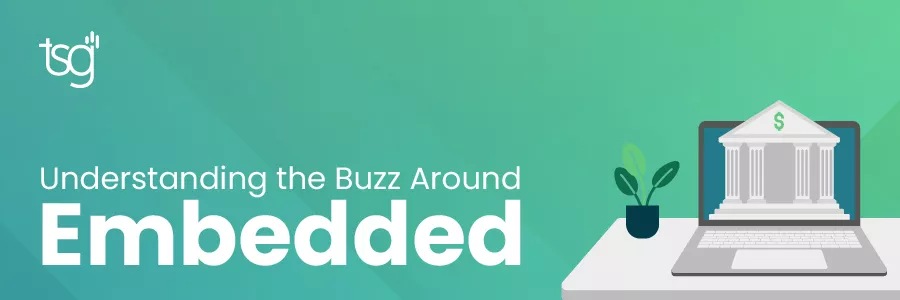
In payments, new terms and nomenclature are constantly circulated into the ever-changing lexicon. They come at you fast; if you blink, you might miss this quarter’s new buzz. Not long ago, it was the advent of “omnichannel” (is it too late to ask your coworkers what this means?), then Buy Now Pay Later (what happened to installment payments?), the differences between surcharging and cash discounting, and most recently – embedded.
Confusingly, embedded sounds a lot like existing terms in payments that have been around for years. Most notably – integrated. Before you could understand and digest the new term, “embedded” has been slapped in front of several products by non-financial entities. Embedded “Finance” often is the umbrella term for embedded products such as embedded banking, embedded payments, embedded lending, and even embedded insurance.
So, What Is Embedded?
The easiest way to think about embedded is that it is the offering and integration of financial tools or services into non-financial platforms or business models. Through this concept, consumers and merchants can receive financial products through entities they already rely on for their business (and presumably trust) from a centralized provider.
For example, restaurants that utilize DoorDash can access merchant cash advance options directly through their interface. In another scenario, consumers purchasing concert tickets on Ticketmaster can buy insurance on those tickets through Ticketmaster at checkout. These services are still being offered by financial service providers on the back-end (in the cases of these examples, through Parafin and Allianz Global Assistance, respectively), but to the merchant and consumer, the seamlessness of the process makes them feel as if the process is happening organically through a single provider.
Is Embedded Really Different?
Providing services through partners and having them appear as your solution (white-labeling) is certainly not new. What perhaps is a new concept, is how embedded solution providers are offering these services downstream to merchants and consumers.
To compare, a traditional integrated payments example as we would think about it, would be an Independent Software Vendor (ISV) partnering with a third-party payment processing provider to offer payments through their software platform. In many cases, this experience is entirely white-labeled to make the end user of the payments function feel that the experience is provided directly from the ISV. Sounds like the embedded example, doesn’t it?
The key difference is in the execution of product delivery. Unlike integrated examples designed as surface-level “tacked-on” products through API calls, embedded products are more directly built into the ISV or non-financial entity providing the service.
Why is Embedded Important?
It’s important to understand “embedded”, not necessarily in how it’s different from other similar named concepts in the market, but in how this product delivery method is being applied increasingly in payments and what this trend means for selling and marketing payment services in the future. Customer acquisition strategy of the past decade has been dominated by creating a sticky solution – build a platform that a merchant relies upon for their increasingly complex business use cases, and they’ll find it difficult to switch to another provider in the future. Embedded solutions built directly into a platform increasingly centralizes service and gives merchants and consumers little ability to change to an alternative vendor when they begin to rely on these services – and gives software as a service (SaaS) players the ability to unlock a new revenue stream not previously realized.
Contact TSG to discuss your embedded strategy.
Related: TSG Launches Embedded Pricing Tool, Enhancing its AIM Platform for Channel Partners